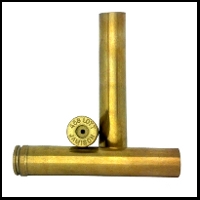 458 Lott Unprimed Brass Cases
458 Lott Unprimed Brass Cases
Box contains 20 pieces
Sold per box
The .458 Lott is a .458 caliber belted hunting cartridge designed as a replacement for the less powerful .458 Winchester Magnum. It was based on the full length .375 H&H Magnum blown out and shortened to 2.800 inches. The cartridge is designed for the purpose of hunting African dangerous game. While the cartridge was slow to gain popularity at first, it is now becoming the standard by which dangerous game cartridges are judged. Jacques P. "Jack" Lott, a big game hunter and writer, had an adverse encounter in Mozambique in 1959 with an African Cape buffalo in which he sustained injuries. He had been hunting with the then new .458 Winchester Magnum. This experience convinced him that a more powerful cartridge than the .458 Winchester Magnum was required when hunting dangerous game. In 1989 A-Square became the first company to offer the .458 Lott as a commercial cartridge. The .458 Lott was standardized by SAAMI in 1995 based on specifications provided by Arthur Alphin of the A-Square company. CZ chambered the cartridge in their BRNO ZKK 602 rifles based on the Magnum Mauser action. Lott remained fairly obscure at least in the United States until Ruger offered the cartridge in their Ruger M77RSM Mk II rifles to the American public in 2002. Since then there has been a slow but steady movement away from the .458 Winchester Magnum towards the .458 Lott among professional hunters heading to Africa. The .458 Lott is able to attain over 2,300 ft/s with a 500 grain jacketed bullet at safe pressure levels from a 23 to 24 inch barrel. The .458 Lott is capable of reaching a velocity of 2,150 ft/s with the 600 grain bullet. With lighter bullets of 300 grain it is able to achieve a velocity of about 2,850 ft/s. The .458 Lott was designed to be an African dangerous game rifle cartridge particularly for use against heavy, thick skinned dangerous game such as elephant, Cape buffalo and rhinoceros. In North America it would also make a fine big bear and bison cartridge.